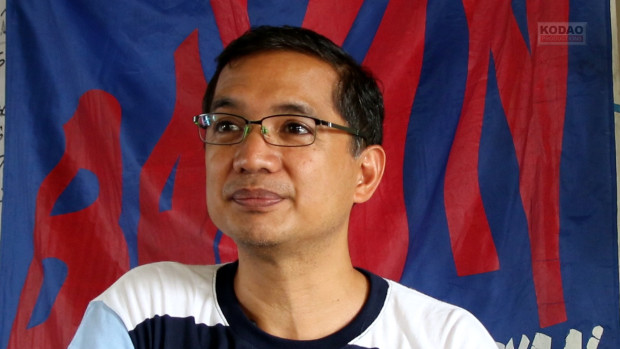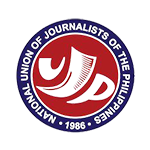August 30 is the International Day of the Disappeared. I can’t help but recall my visit to Argentina this year.
It was an unforgettable journey filled with new learnings and lasting memories. The Argentina I experienced far exceeded my expectations. While many people associate the country with a famous corned-beef brand—aptly named due to Argentina’s reputation for high-grade beef—I discovered a deeper story. I realized that Argentina and the Philippines, despite being thousands of miles apart, have common historic struggles.
My short stay at Casa Nazaret, a modest venue in Buenos Aires for small gatherings and meetings, will remain etched in my memory. The building features neat dormitory-style bedrooms, a spacious function hall, meeting rooms, and a cozy kitchen, all well-kept by dedicated women from the Iglesia de la Santa Cruz (Parish of the Holy Cross), one of Argentina’s most progressive Catholic churches. Casa Nazaret is unassuming, but conversations with the church workers slowly unraveled the deep historical significance of the place.
Upon entering Casa Nazaret, the first thing that caught my eye was the striking mural in the function hall. It depicts Jesus Christ breaking bread with two priests, two nuns, and a child at a small table, while on the side a group of mothers tend to a wounded figure.
In the evening, a church worker approached us and offered to give us a tour of Casa Nazaret, starting with that powerful mural. It was apparently painted by Adolfo Pérez Esquivel, a Nobel Peace Prize laureate and a prominent figure in the opposition to Argentina’s civil-military dictatorship. The individuals depicted breaking bread with Jesus, our tour guide explained, represented the victims of the Argentinian military junta. Each figure in the mural had either been martyred or disappeared during the regime of Jorge Rafael Videla, Argentina’s notorious dictator from 1976 to 1981.
Videla ruled Argentina during the Cold War and the US-operated Operation Condor in Latin America, the US political and military campaign to suppress the growing Left-wing movement in Latin America. Videla launched the Dirty War to target activists and suspected communists, which resulted in the brutal killings and enforced disappearances of Argentinian civilians.
A courageous group known as the Madres de Plaza de Mayo, or Mothers of Plaza de Mayo, was formed by mothers who were looking for their disappeared children—students, trade unionists, journalists, and young professionals. They were also looking for the babies and children of their own children, who had been abducted by the military along with their parents. The madres bravely demonstrated in the Plaza de Mayo, a public square in front of the presidential palace, and demanded government accountability for the desaparecidos, or the disappeared.
Casa Nazaret became a lifeline for these madres – a meeting place where they could plan their next actions and find solace in their shared grief as they searched for their missing children and grandchildren. It became a safe haven for the madres and other relatives of the desaparecidos, who became the next target of the ruthless government.
Our tour guide led us down a dimly lit hallway that connected Casa Nazaret to the Iglesia de la Santa Cruz, which revealed a collection of haunting photographs plastered on the walls. “These are the founders of the movement,” she said, her voice filled with emotion. “They were brutally killed by the military. And this very church was the last place where they were seen.”
It turned out that the movement had been infiltrated. Alfredo Astiz, a man in his early 20s who claimed to have lost his sister to the military joined the movement. The madres welcomed him with open arms but would later learn the heartbreaking truth: Alfredo was not a fellow victim; he was an undercover agent sent by the military government to penetrate the movement and identify its leaders.
Astiz successfully identified twelve of the movement’s key leaders, and in collaboration with other military agents, he orchestrated their abduction. In December 1977, after a simple mass at the Iglesia de la Santa Cruz, Astiz kissed the cheeks and hands of the twelve leaders to mark them for the roaming military agents. Our group collectively gasped at this chilling revelation. “Just like Judas’ kiss,” one of us whispered.
In a somber atmosphere, our tour guide revealed that only seven of the twelve disappeared were later found, their bodies bearing brutal signs of torture inflicted before their deaths. Some of the madres were thrown into the sea alive, naked and bound to prevent any chance of escape. This way of killing was infamously known as the “death flight”.
Astiz and several military officers were convicted of crimes against humanity and charged with the deaths of thousands of Argentinians. But justice has remained elusive – thousands of the disappeared are still unaccounted for. There are estimates that show that up to 30,000 individuals went missing during Videla’s regime.
Up to this day, the madres continue their tireless pursuit of truth and justice. Every Thursday at exactly 4:00pm, they gather in Plaza de Mayo, wearing white headscarves and demanding accountability from the present government. Despite their advanced age and difficulty in walking, these courageous women remain steadfast and refuse to give up on their cry for justice.
The Philippines has its own harrowing stories of desaparecidos, stretching from the Marcos dictatorship to the present government of his son. The experiences of the madres in Argentina parallel those of the nanays in the Philippines who are still looking for their disappeared children. The stories of the tireless search of Concepcion Empeño for her daughter, Karen (for 18 years); of Erlinda Cadapan for her daughter, Sherlyn (for 18 years); of Edita Burgos for her son, Jonas (for 17 years); and of Mercedita de Jesus for her son, Bazoo (for 1 year). There are numerous other nanays who have been indefatigable not only in searching for their children but also for truth and justice.
The mothers’ cry does not only confront the State that plays deaf to the demands for accountability and threatens those who defend human rights. It also shakes the larger social context of impunity, deprivation, and injustice. It is incomparable bravery and strength to persist despite facing unimaginable difficulties and the weight of endless waiting. The mothers’ cry is an inspiration. #
















